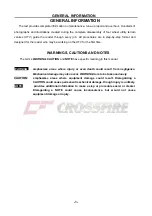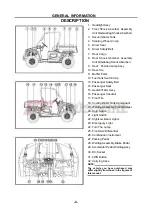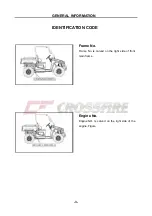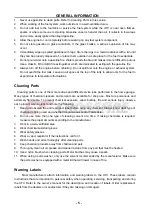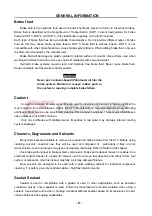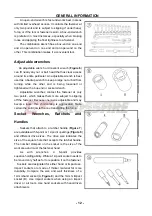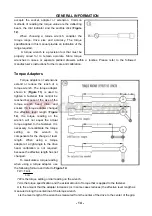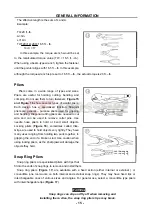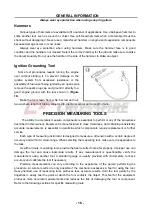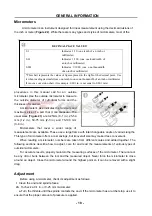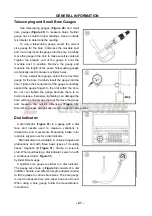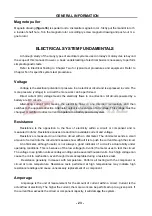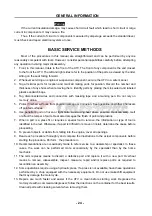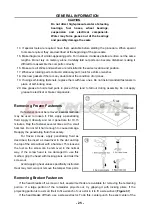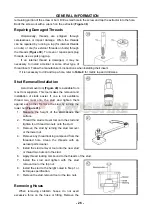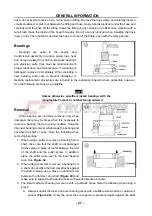
GENERAL INFORMATION
- 14 -
accepts the socket, adapter or extension. Common
methods of reading the torque value are the deflecting
beam, the dial indicator and the audible click
(Figure
12).
When choosing a torque wrench, consider the
torque range, drive size and accuracy. The torque
specifications in this manual provide an indication of the
range required.
A torque wrench is a precision tool that must be
properly cared for to remain accurate. Store torque
wrenches in cases or separate padded drawers within a toolbox. Please refer to the followed
manufacturer’s instructions for their care and calibration.
Torque Adapters
Torque adapters or extensions
extend or reduce the reach of a
torque wrench. The torque adapter
shown in (Figure 13) is used to
tighten a fastener that cannot be
reached because of the size of the
torque wrench head, drive, and
socket. If a torque adapter changes
the effective lever length (Figure
14), the torque reading on the
wrench will not equal the actual
torque applied to the fastener. It is
necessary to recalibrate the torque
setting on the wrench to
compensate for the change of lever
length. When using a torque
adapter at a right angle to the drive
head, calibration is not required,
because the effective length has not
changed.
To recalculate a torque reading
when using a torque adapter, use
the following formula and refer to
Figure 14:
TW = TA×L
L+A
TW is the torque setting or dial reading on the wrench.
TA is the torque specification and the actual amount of torque that is applied to the fastener.
A is the amount that the adapter increases (or in some cases reduces) the effective lever length as
measured along the centerline of the torque wrench.
L is the lever length of the wrench as measured from the center of the drive to the center of the grip.


